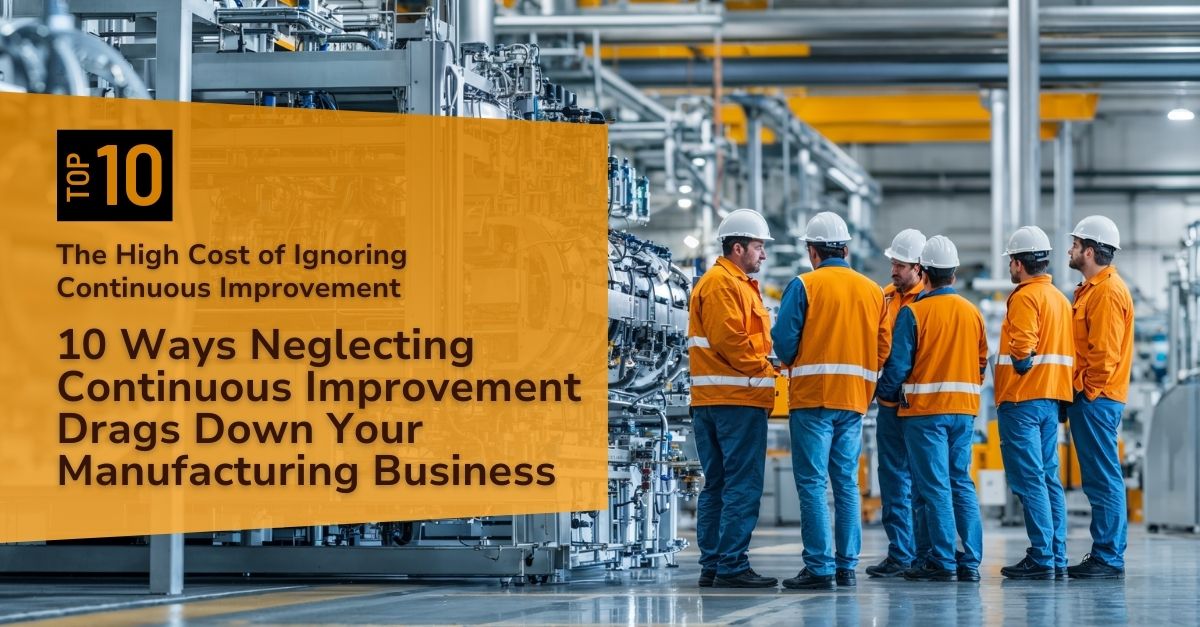
In manufacturing, execution is everything. You can have the best strategy in the world, but if your frontline supervisors aren’t equipped to carry it out day-to-day, it won’t matter.
That’s why high-performing operations invest in their frontline leaders, not just as task managers, but as skilled performance managers who drive results.
When supervisors are trained and supported in this way, the gains aren’t theoretical. They show up in throughput, yield, cost per unit, and on-time delivery. In many cases, these improvements are what separate plants that consistently meet targets from those constantly playing catch-up.
Below are 10 critical ways performance-focused frontline leadership improves both productivity and profitability, turning strategy into sustainable, repeatable execution on the shop floor.
1Clear Goal Setting:
Supervisors trained in performance management translate company goals into daily, trackable targets. Instead of vague directives, teams receive clear production expectations tied directly to KPIs. This reduces miscommunication, eliminates wasted motion, and ensures that everyone, from operators to technicians, is aligned on what success looks like right now.
In practice, that might mean a line lead knows exactly how many good units need to ship per hour, and when they’re off pace, they have a process to address it.
2Real-Time Performance Monitoring:
High-functioning leaders don’t wait until the end of a shift to assess performance. They monitor it throughout the day using visual controls, daily management systems, and team huddles to identify and solve problems as they emerge.
This minimizes surprises at shift change and allows for mid-shift corrections that preserve quality, meet delivery times, and prevent small issues from cascading into full-blown downtime.
3Informed Decision Making:
With the right tools and training, frontline managers can prioritize faster, allocate more effectively, and solve issues with confidence. They’re not guessing, they’re acting on real data.
Whether it’s choosing which task to escalate, which machine needs attention, or which crew member needs support, these decisions directly impact productivity. Better decisions at the front line translate into smoother flow and higher output across the board.
4Enhanced Employee Engagement:
Supervisors who give timely feedback, recognize contributions, and coach instead of criticize create a healthier work environment. That translates into higher discretionary effort, fewer safety issues, and a stronger sense of ownership at every level.
Engaged employees are more likely to stay, more likely to help others, and more likely to speak up when something needs attention, behaviors that drive continuous improvement without needing a major program to enforce it.
5Streamlined Processes:
Well-equipped leaders are constantly looking for friction points, bottlenecks, redundant steps, and unnecessary waits. By observing workflows and listening to team input, they identify what’s slowing things down and take immediate steps to fix it.
That might mean reorganizing a workstation, adjusting crew timing, or eliminating a non-value-adding inspection step. These small, frontline-driven changes are often the most effective in reducing cycle time and improving flow.
6Personalized Training and Development:
A strong supervisor knows their team, not just who’s showing up, but who’s ready to take on more. They use informal assessments, observation, and conversations to spot skills gaps or developmental needs early.
Instead of waiting for HR-driven training cycles, they deliver targeted coaching in the moment or request specific upskilling for individuals. This keeps the team more capable, more flexible, and more resilient when demand shifts or unplanned absences occur.
7Fostered Innovation:
Supervisors who are trained to problem-solve don’t just react to issues, they prevent them. They look for patterns in recurring problems, bring ideas to planning meetings, and test improvements on a small scale before rolling them out.
When the frontline feels empowered to suggest and implement changes, innovation becomes organic, embedded in the culture instead of siloed in engineering or leadership.
8Risk Management:
Supervisors who stay close to operations are the first to spot risks, whether it’s a safety concern, a machine running out of spec, or a buildup of WIP in an unexpected area. Their quick action keeps minor issues from becoming line stoppages or quality failures.
Better risk awareness also reduces the number of surprises leadership has to manage and creates a more stable operating rhythm from shift to shift.
9Better Resource Allocation:
Trained leaders allocate resources based on current conditions, not yesterday’s assumptions. They understand crew capabilities, machine readiness, and order priority, and adjust accordingly.
This agility prevents bottlenecks, avoids burnout from overloading key individuals, and helps the plant hit targets even when conditions aren’t ideal. It’s not about doing more with less, it’s about doing better with what you have.
10Strengthened Company Culture:
Supervisors set the tone. When they coach for improvement, reward consistency, and hold the line on performance expectations, it sends a message: we’re here to get better every day.
This kind of culture doesn’t emerge from posters or programs, it grows from the consistent behavior of frontline leaders. Over time, it becomes embedded in how people work, train, and collaborate.
For Senior Leaders: The ROI Is on the Floor
If your frontline leadership isn’t fully trained and aligned with your performance goals, you’re leaving productivity and profit on the table. Every improvement listed above is achievable, but only when supervisors have the skills, tools, and authority to lead through metrics, behavior, and ownership.
The gap between what’s expected and what’s actually happening on the shop floor often traces back to this frontline execution layer. Close that gap, and the improvements cascade upward, impacting throughput, cost, quality, and customer satisfaction.
This is where our team steps in.
The POWERS Difference
At POWERS, we specialize in helping manufacturers operationalize performance by developing frontline leaders who know how to deliver results.
We work side-by-side with supervisors and managers to:
- Translate strategic goals into daily performance routines
- Build accountability and structure around production metrics
- Improve communication and responsiveness at the point of execution
- Identify and close gaps that erode productivity and reliability
Our hands-on approach ensures that improvements stick, because they’re built into how your frontline works every day. Whether you’re addressing underperformance, onboarding a new leadership layer, or looking to scale a successful model across multiple sites, we bring the structure and insight to make it happen.
Let’s talk about how our team and tools can help power up your frontline.
Continue Reading from the Mastery Series
- Part 1 - Strategic Alignment that Bridges Daily Tasks with Broader Visions for Unified Organizational Success
- Part 2 - Crafting Clarity through Effective Communication and Active Listening
- Part 3 - Sharpening Decision-Making Prowess for Seamless Operations and Minimal Downtimes
- Part 4 - Championing Lean Principles for Streamlined Success and an Ever-Evolving Workplace
- Part 5 - Mastering Performance Management for Optimal Team Output and Growth
- Part 6 - How Leaders Well-Trained in the Soft Skills Transform Manufacturing Teams
- Part 7 - Strengthening Conflict Resolution Skills for Peak Productivity and Profitability Gains
- Part 8 - Unleashing Potential with Precision Time and Resource Management
- Part 9 - Safety First for Sustainable And Scalable Productivity And Profitability
- Part 10 - Equipping Your Shop Floor Leaders to Be Effective Change Managers







